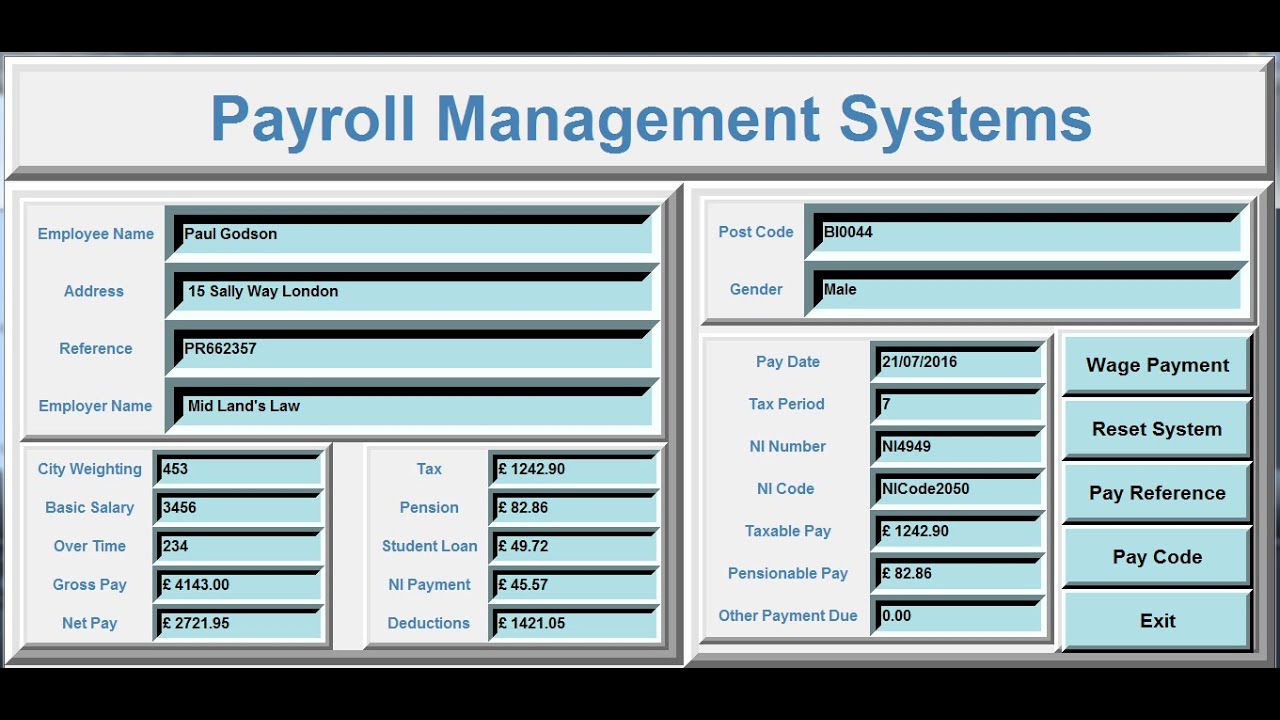How to Create a Simple Payroll System: A Step-by-Step Guide
Introduction
Managing payroll is a crucial aspect of any business, big or small. Payroll systems not only ensure accurate and timely payments to employees but also help in maintaining compliance with tax regulations. While there are advanced payroll software solutions available in the market, small businesses with limited resources may opt for a simple payroll system. In this article, we will guide you through the process of creating a basic payroll system from scratch. How do I create a simple payroll?
Step 1: Determine Your Payroll Schedule
Understanding the Importance of Payroll Schedule
Before you start creating your payroll system, it’s important to determine your payroll schedule. Will you pay your employees weekly, biweekly, or monthly? This decision will impact how you set up your system. It’s essential to choose a schedule that aligns with your business needs and ensures consistency in paying your employees.
Step 2: Gather Employee Information
Collecting Employee Data
To begin your payroll system, you need to gather essential employee information. Create a standardized form that includes fields for employee names, addresses, social security numbers, tax withholding information, and bank account details for direct deposit. Ensure that this information is securely stored to protect employee privacy.
Step 3: Calculate Gross Pay
Determining Gross Pay
Calculating gross pay involves determining how much employees have earned before any deductions. This includes regular wages, overtime pay, bonuses, commissions, and any other compensation agreed upon in employment contracts. Ensure that you have a clear method for tracking and recording these earnings accurately.
Step 4: Deductions and Withholdings
Understanding Deductions and Withholdings
Next, you need to calculate deductions and withholdings from each employee’s gross pay. Common deductions include federal and state income taxes, Social Security contributions, Medicare taxes, and any voluntary deductions like health insurance premiums or retirement contributions. Stay updated with the latest tax regulations to ensure compliance.

How do I create a simple payroll?
Step 5: Net Pay Calculation
Calculating Net Pay
Net pay is the amount employees receive after all deductions and withholdings have been subtracted from their gross pay. Subtract the calculated deductions from the gross pay to determine the final net pay for each employee. This is the amount that will be paid out to the employees.
Step 6: Keep Accurate Records
Maintaining Payroll Records
It’s crucial to maintain accurate and organized payroll records for each pay period. Create a system to store information such as employee earnings, deductions, tax payments, and time off. These records will come in handy during audits and can help you resolve any disputes or discrepancies.
Step 7: Payroll Processing and Payment
Processing Payroll and Making Payments
Once you have calculated net pay and maintained accurate records, it’s time to process payroll and make payments to your employees. Depending on your chosen schedule, you may manually write checks or set up a direct deposit system. Ensure that you adhere to any legal requirements regarding pay stubs or other documentation.
Step 8: Payroll Taxes and Reporting
Complying with Payroll Tax Obligations
As an employer, you have certain payroll tax obligations. This includes withholding and remitting employee taxes, as well as paying employer taxes. Research and understand the tax requirements for your jurisdiction, including federal, state, and local taxes. Set up a system to accurately calculate, withhold, and remit these taxes on time. Additionally, be aware of any reporting requirements, such as filing quarterly or annual payroll tax reports.
Step 9: Stay Updated with Payroll Regulations
Remaining Compliant with Payroll Regulations
Payroll regulations and tax laws can change over time. It’s essential to stay updated with any changes to ensure compliance. Regularly review government websites, consult with tax professionals, or consider using payroll software that automatically updates tax rates and regulations.
Step 10: Evaluate and Improve
Continuous Evaluation and Improvement
Creating a simple payroll system is not a one-time task. Regularly evaluate your system to identify any inefficiencies, errors, or areas for improvement. Seek feedback from employees and address any concerns they may have. Consider automating certain aspects of the payroll process or integrating with accounting software for seamless record-keeping. For a payroll accountant read on.

Conclusion
Streamlining Your Payroll Process
Creating a simple payroll system requires careful planning and attention to detail. By following the steps outlined in this guide, you can establish a basic payroll system that ensures accurate and timely payments to your employees while remaining compliant with tax regulations. Remember to keep accurate records, stay updated with payroll regulations, and continuously evaluate and improve your system to streamline the payroll process for your business.

